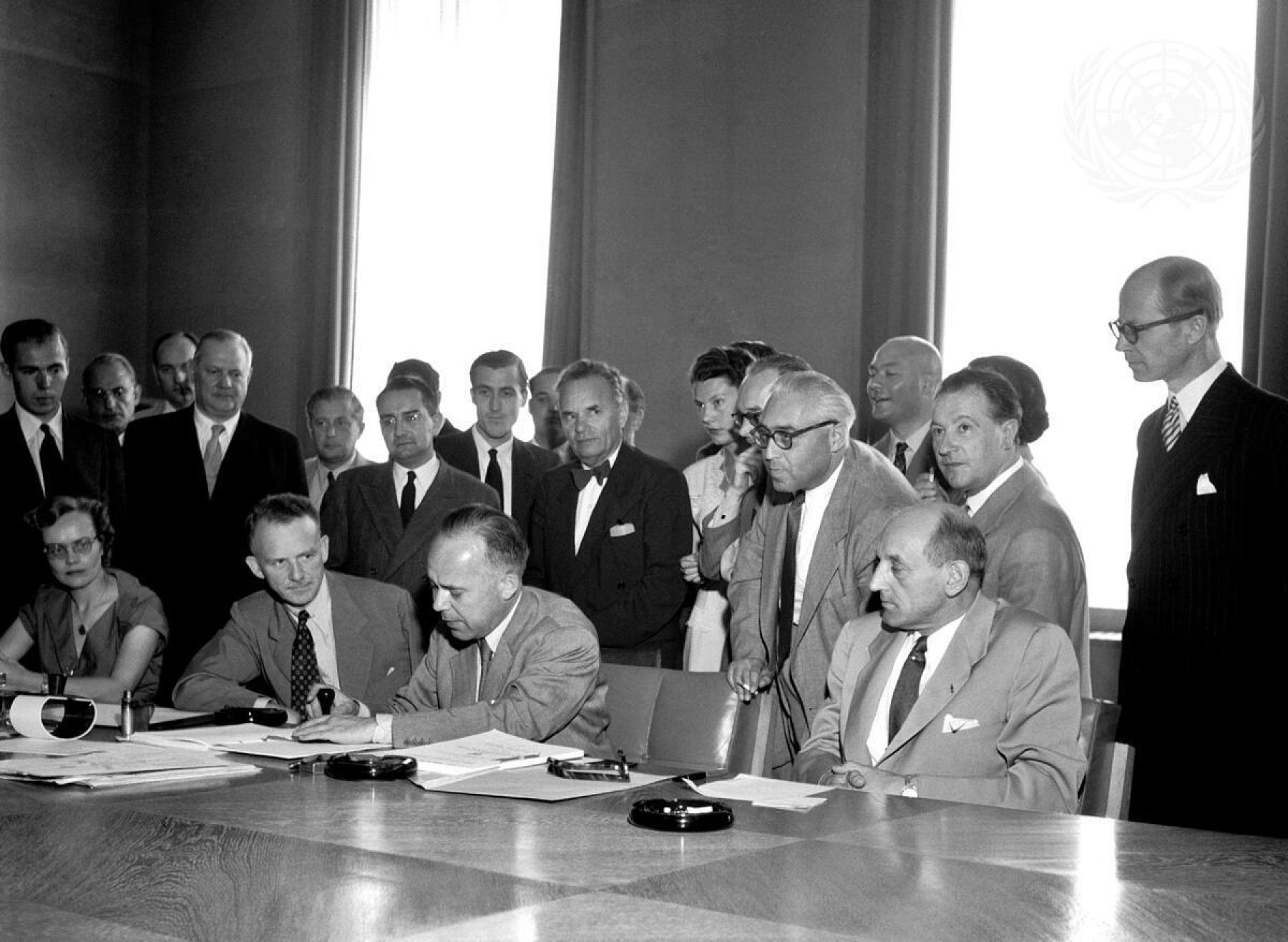January 24, 2022
UN Refugee Convention, 1951

This document defined the term “refugees” in international legal parlance as people who “owing to well- founded fear of being persecuted for reasons of race, religion, nationality, membership of a particular social group or political opinion” could not avail themselves of the protection of a state. It limited this definition to those displaced or dispossessed by events occurring in Europe before 1951.
The core principle of the Refugee Convention is a commitment to non-refoulement: that is, the principle that refugees could not legitimately be returned to a country where they faced serious threat.

List of reading
Jane McAdam, “The Enduring Relevance of the 1951 Refugee Convention,” International Journal of Refugee Law 29, 1 (2017): 1- 9
Paul Weis, The Refugee Convention, 1951: the travaux préparatoires analysed, with a commentary (Cambridge: Cambridge University Press, 1995)
Gilad Ben-Nun, “The British–Jewish Roots of Non-Refoulement and its True Meaning for the Drafters of the 1951 Refugee Convention,” Journal of Refugee Studies 28, no. 1 (2015): 93–117
Jari Pirjola, “Shadows in Paradise – Exploring Non-Refoulement as an Open Concept,” How Politics Shaped the Outcome of the 1967 Protocol,” International Journal of Refugee Law 19, 4 (2007): 639-660
